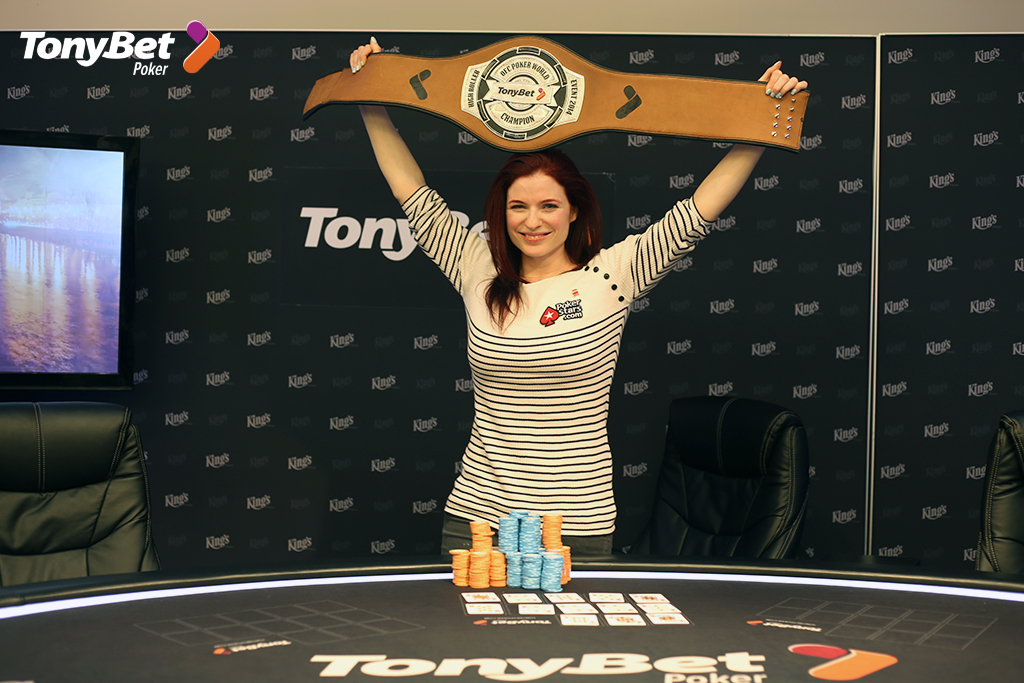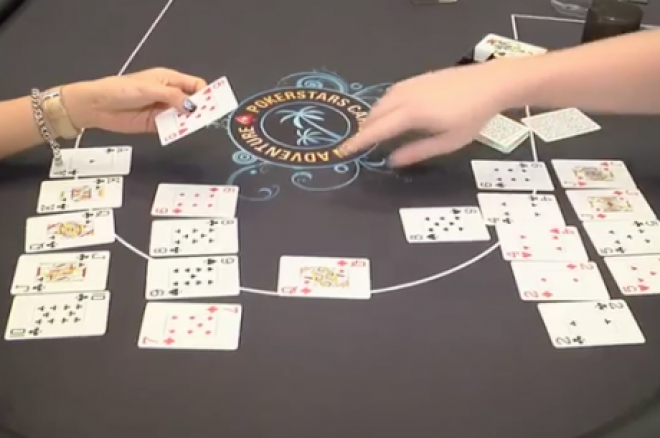When Sergey “gipsy” Rybachenko saw a hand of Open-Face Chinese, his first thought was “I am going to make millions of dollars in this game, just like I did in regular Chinese.” Open-Face Chinese hooks quickly and inspires strong initial reactions. Jason Mercier live-tweeted a 34-hour session at the European Poker Tour stop in San Remo, while Daniel Negreanu and Phil Hellmuth are also major advocates. Daniel tweeted soon after the WSOP that “It’s been a while since I’ve been addicted to a card game but I am completely addicted to Open Faced Chinese Poker.”
- Online Chinese Poker
- Open Face Chinese Poker Online Deuces Wild
- Open Face Chinese Poker online, free
- Pineapple Open Face Chinese Poker online, free
Despite shared nomenclature, skills in regular Chinese don’t transfer directly to Open-Face. “It’s like checkers and chess”, said poker pro and WPT final tablist Daniel Buzgon. Michael Casella, a chess master and high stakes mixed-game pro who has found regular Chinese to be one of his most profitable games, made the same checkers and chess analogy. Although it’s a fallacy that regular Chinese is too easy and intuitive to profit from consistently, the game still pales in complexity when compared to Open-Face.
Like regular Chinese (high), Open-Face Chinese is structured into three hands of descending value, 1. A five-card hand in the back (the strongest) 2. A five-card hand in the middle and 3. A three-card hand “up top.” If your middle is stronger than your back hand or your top is stronger than your middle, you “foul.” Open-Face Chinese can be played with two to four players and begins with five cards dealt to each player. The player left of the button places the five cards anywhere in the back, middle and top (not to be moved at any other point in the hand). Afterwards, each player is dealt one card at a time, starting from the left of the button, until 13 cards are dealt to each player. The goal is to make the strongest possible hand, accumulate as many royalties as possible without fouling.
The widespread royalty system gives 20 points in the back for a royal flush, 10 points for a straight flush, eight for quads, six for a full boat, four for a flush, and two for a straight. If any of those hands are achieved in the middle, the royalties are doubled. On top, you get one point in royalty for every pair over sixes up to nine points for aces. Without steep royalties, Open-Face Chinese would quickly become a game of not fouling. The incentives to earn royalties seduce many players away from a simple strategy of trying not to foul, and add mathematical complexity and tension to the game, so that it’s often not obvious whether for instance, you should go for a flush or play it safe and make pairs. Chinese expert Robert Mizrachi said, “If you’re nitty in poker, you’re going to try not to foul, if you have more gamble, you’re going to go for royalties.”
Open Face Chinese Poker (OFCP) is a new and exciting variation on the popular Chinese Poker betting card game. Played for real-money in home games and casinos for years, the game is now reaching sites offering online poker. Most Open Face Chinese poker games consist of 2-4 players with the standard game online consisting of three-handed tables. A dealer button is used for the sake of determining order of action and moves after each hand.
If you foul or get swept against an opponent, you lose six points plus any royalties. You win one point for beating an opponent (winning two of the three hands). Your own royalties only count if you have a legal hand, in which case they count even if your opponent has a higher royalty.
Variations of Open-Face have been played for years in Baltic countries, but it’s only recently become widely popular and the rules are not yet codified. Many players have suggested tweaks. After playing a number of long high-stakes sessions in San Remo with Shaun Deeb, Scott Seiver and Daniel Negreanu , Jason Mercier tweeted:
“New official royalty scoring for Open-Face Chinese. Str8- 2, flush 4, boat 6, quads 10, str8 flush 15, royal 25 #hadtobedone please retweet.” Chinese expert Mizrachi, on the other hand, said that he wasn’t sure about the current royalties, because they add so much variance to the game.
Bryan Devonshire, who got hooked on Open-Face at the Los Angeles Poker Classic thinks the game is addictive because even though there is a huge skill gap, “it’s easy for anyone to pick up and it flows well.
Devonshire thinks the game will remain popular for a while. “The higher stakes are trend-setters. Chinese poker has been the cocaine of after hours poker parties for a while, and Open-Face is even awesomer.” Devonshire has even put money on it — he scooped up a number of URLs related to Open-Face Chinese, though he is not sure yet how he will use them.
Rybachenko, backer of 2008 WSOP runner-up Ivan Demidov, said that he built much of his roll at a swank private club in Moscow, where rich businessmen played Chinese (high) for a US equivalent of almost $5,000 a point. Since then, he lost much of it in mixed games on Full Tilt and Bellagio to the likes of Phil Ivey and Patrick Antonius. As he told me, almost proudly “you can find my screen name, ‘mrcall912’ as one of the top online losers of all time.” “I think I’ll be back though,” he said.

Rybachenko sees Open-Face Chinese as a serious contender for bankroll builder, so much that he has inquired into creating programs to solve the game. The first person to do it well, he thinks, will have an edge in high stakes games, which can play for hundreds of dollars a point. Multiple programmers he’s approached, however, claim the task is too complicated. He’ll keep trying though — he intends to come to the 2013 World Series of Poker prepared for action.
Online Chinese Poker
Several pros interviewed did offer light Open-Face Chinese poker strategy tips. If you don’t have friends to practice with, play solitaire. Become comfortable with counting cards and outs. “Stud skills and Open-Face tend to cross over quite well,” Devonshire stated. Remember that position is vital in Open-Face Chinese poker.
Sergei gave one example of his strategy from a four-handed game “Let’s say you’re dealt 8-8-J-3-5 with three clubs. If I’m in first position, I’ll probably only go for the flush if the jack is a club and otherwise I’ll play 8-8-J in the back. I’ve seen some players would make the mistake of placing the jack in the middle (if they don’t get another jack they don’t know where to put it). If I’m in second position, I would definitely go for the flush if no clubs are out, if I’m in third position I’d go for it with one dead club.” Buzgon said that too many players underestimate the importance of adjusting based on the number of players: “If you were playing no limit hold’em, you wouldn’t play the same way heads-up as you would four-handed.” Most players interviewed preferred the three-handed game, due to the balance of available information.
Devonshire said, “The number one strategy rule of the game is ‘Don’t Foul.’ And that starts with the first five and how you lay the foundation for your hand. You always want to have equity for a big hand, but it’s so important not to foul.” Robert Mizrachi related the story of a high-stakes San Diego cash game player, who entered a $200 a point game and started by putting aces up top. While this would be worth a royalty of 9 points if achieved, it requires too much luck to create a legal hand. In a four-handed game (in which all other three opponents create legal hands), this mistake will cost a minimum of $3,600 (200 a point times six), not counting any royalties.

Open Face Chinese Poker Online Deuces Wild
Rob Mizrachi, cited by many players as one of the most skilled Open-Face players, was attracted initially “because I thought it had more skill than regular Chinese.” However, he is concerned with the hourly, “every hand takes so long, five to eight minutes as opposed to around two for regular Chinese.” He proposed using clocks set at around 30 minutes for each player. Whenever a player thinks, his clock runs down, and after placing his card, the clock would transfer to the next player — just like in chess. Whoever runs out of time first pays all the other players. There would be a penalty for quitting a session prior to the end of a cycle. “It would be awesome, (in addition to making the game a lot faster), a lot of people might make mistakes hoping the clock doesn’t go off.” Devonshire agrees that maintaining a reasonable pace is key: “When you get down to card eleven or twelve, you’re thinking you have 40 pieces of information to review. I think there should be some sort of shot clock because (over-thinking) blows the flow of the game.”
Open Face Chinese Poker online, free

Because Chinese poker and Open-Face tend toward late hours, combined with drinking and tournament bust-out blues, careful account management often evaporates as rolls are decimated or bloated. One big error newbies make is assuming that they can play for similar stakes as they would play a regular Chinese game. Because of royalties, the game plays much bigger (the more players, the more variance). So if you normally play Chinese poker for $5 a point, you’ll probably want to play Open-Face for about $2 a point.
Tournament poker helps many players with bankroll management, creating a stop loss and adding glamorous incentives. Though Chinese forms don’t lend as well to tourney play, it is certainly possible (I played in a combination high-low Chinese tourney at the Palms this year) and could hasten the game’s popularity. Daniel Negreanu tweeted, “We need an Open Face Chinese Poker tourney at PCA.” In a tournament — every time a hand concludes, players could exchange chips, multiplying the royalties by the number of chips you get for each point, which escalate as the tournament progress. This would also create some interesting strategy differences — as players become short-stacked, they may not have enough chips to fully cash in if they hit a big royalty.

As Open-Face Chinese replaces other Chinese forms as the after-hours game of choice, there is no telling how far it can go. “That it’s become so popular at the high end and at low stakes is a good sign for its staying power,” said Devonshire. One thing is for sure: bankrolls will be bolstered and demolished as thousands are seduced by the delicate balance between gambling and just creating a legal hand. ´
Pineapple Open Face Chinese Poker online, free
Jennifer Shahade is an author, two-time US Women’s chess champ & editor at uschess.org. She is also a member of the Grindettes and a writer for PokerStars Women. Read her Poker Player’s Guide To Chess Gambling.
